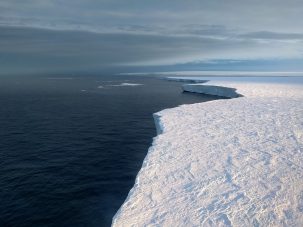climate14
-

Scientists Link Climate Change to Melting in West Antarctica
A new study shows, for the first time, evidence of a link between human-caused global warming and melting of the West Antarctic Ice Sheet.
-

More Intense Non-Tropical Storms Causing Increased Rainfall in U.S. Southeast
In the Southeastern United States, the increasing amount of rain during hurricane season is coming not from hurricanes but from non-tropical storms created by weather fronts, new research finds.
-

Toward a Pragmatic Climate Policy
I often say that the human species is ingenious and not suicidal. This would be a good time for America to demonstrate that instinct for survival and pragmatic invention.
-

The Climate Epochs That Weren’t
Climate scientists often invoke the Medieval Warm Period and the Little Ice Age as natural worldwide climate swings predating human influences. They may not have worked the way we think.
-

How Did Africa’s Grasslands Get Started?
Millions of years ago, vegetation across much of the world underwent a transformation as grasses with a new way of doing photosynthesis displaced previously dominant plants, shrubs and trees. A new study examines what got these plants started, and why they spread so far and wide.
-

Study Bolsters Case That Climate Change Is Driving Many California Wildfires
A new study combs through the factors that can promote wildfires in California, and concludes that in many cases, warming climate is the decisive driver.
-

Meet the Students Studying Environmental Issues in the Middle East in 2019
This July, Columbia University and Tel Aviv University will send graduate students to the Middle East to learn about the environmental challenges facing communities in Jordan and Israel.
-

Part of the Pacific Ocean Is Not Warming as Expected. Why?
Climate models predict that as a result of human-induced climate change, the surface of the Pacific Ocean should be warming. But one key part is not.
-

Melting of Himalayan Glaciers Has Doubled in Recent Years
A new study is the latest and perhaps most convincing indication that climate change is eating the Himalayas’ glaciers, potentially threatening water supplies for hundreds of millions of people across much of Asia.

AGU25, the premier Earth and space science conference, takes place December 15-19, 2025 in New Orleans, Louisiana. This year’s theme—Where Science Connects Us—puts in focus how science depends on connection, from the lab to the field to the ballot box. Once again, Lamont-Doherty Earth Observatory and Columbia Climate School scientists, experts, students, and educators are playing an active role, sharing our research and helping shape the future of our planet. #AGU25 Learn More
